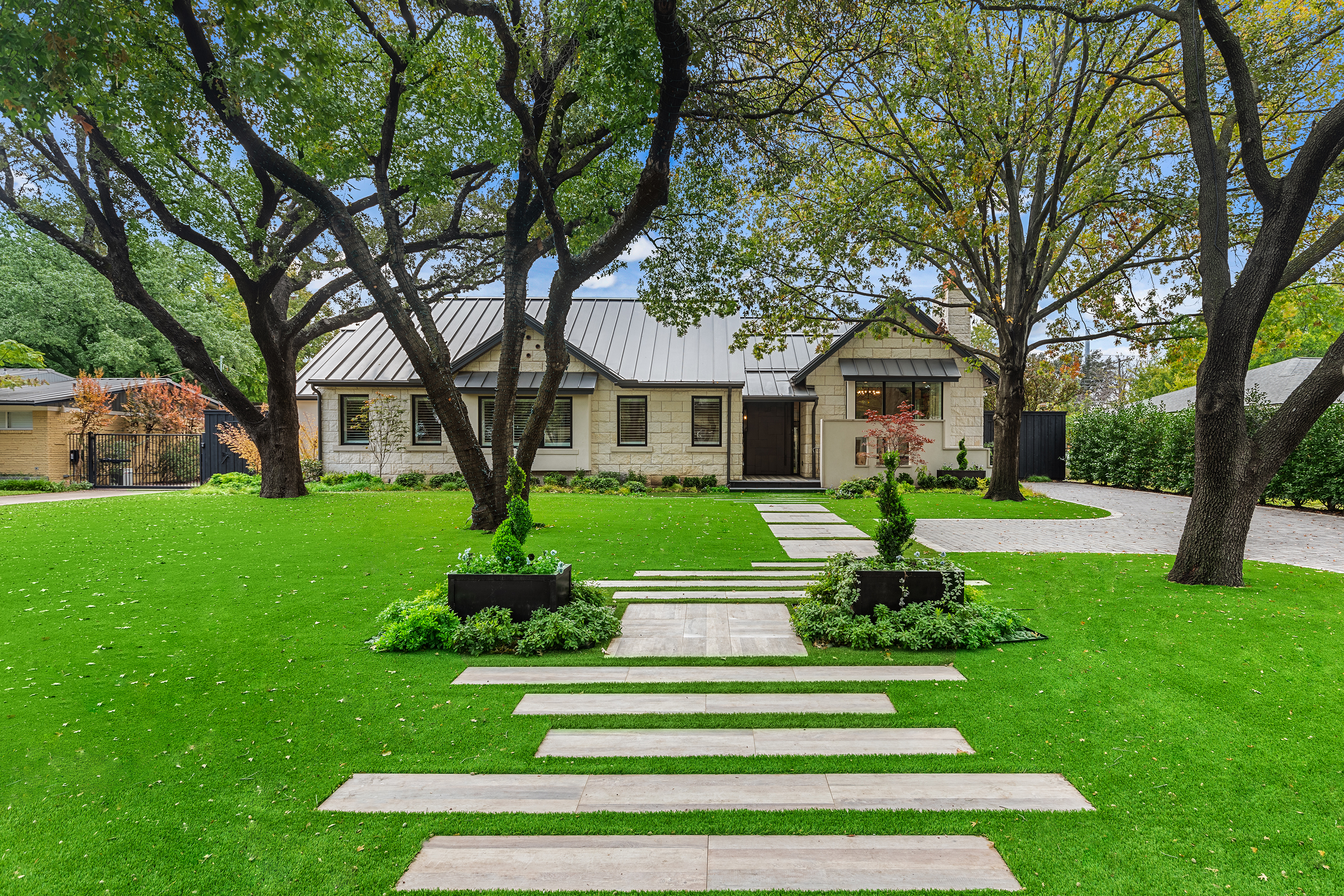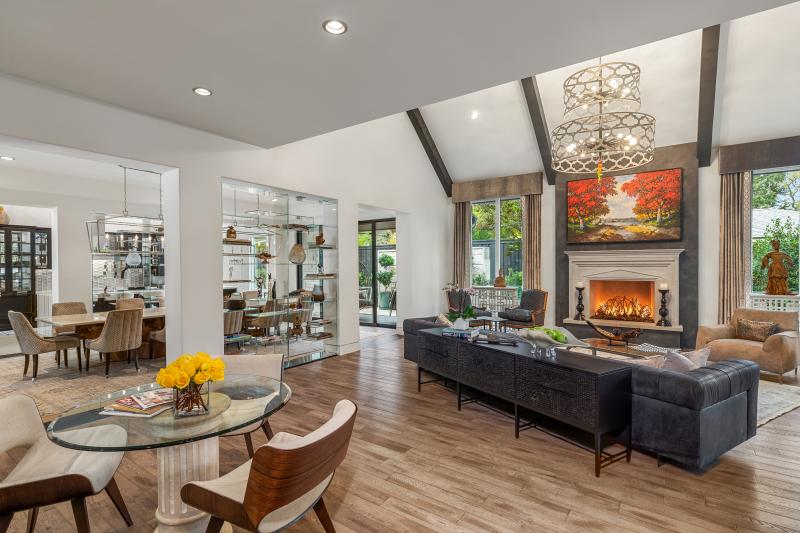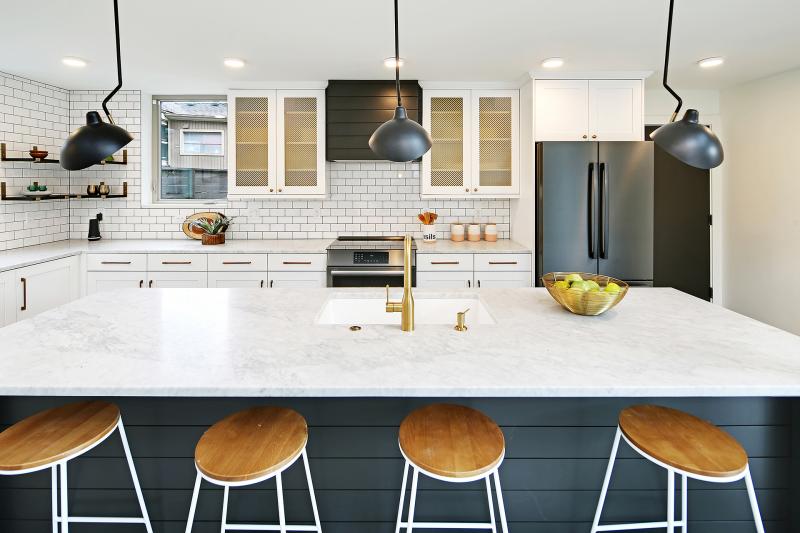Awareness of how Americans' actions impact the environment is on the rise, but trails behind other factors during the homebuying process, according to a survey by the National Association of Home Builders (NAHB).
NAHB’s "What Home Buyers Really Want" report gathered insight from 3,247 homebuyers on their levels of concern with environmental impact, willingness to pay, and green home features buyers want.
According to the U.S. Environmental Protection Agency, the single-family home construction sector is one of the most environmentally impactful industries in the country, but the most environmental impacts happen during occupancy. And residential pros are increasingly allowing environmental impacts to influence their product and design decisions, according to John Burns Real Estate Consulting.
READ MORE: BATHROOM PRODUCTS AND FEATURES BUYERS ACTUALLY WANT IN 2021
The LEED Platinum-certified GREENLAB by GGO Architects won the Silver award in the Best in American Living Awards 2020 One-of-a-Kind Custom Home 2,001 - 3,000 sq. ft. category. | Photo: Kristene Littlefield
Do Buyers Care if Their Homes are Green?
The report found that buyers care about their homes' impact on the environment, but affordability remains the top priority.
Just 22% of respondents stated they are not concerned about the environment. Another 32% said they are concerned about their homes’ impact on the environment, but it would not affect their home purchase, yet a 31% share said it would, but only if they did not pay extra. The remaining 15% would pay more for an environmentally friendly home.
NAHB conducted the same survey in 2003, 2007, 2012, 2015, and 2018. The environmental concern results remained steady, but respondents unwilling to spend more for environmentally friendly homes and those who do not care about the environment changed the most, from 46% down to 31% and 11% up to 22%, respectively.
It may be hopeful that most homebuyers are concerned about their homes' impact on the environment, but premiums and costs are even larger concerns. Still, buyers will dish a bit more cash if they know it will help them out financially in the long run.
The median amount of money buyers would cough upfront to save $1,000 in utility bills a year in the future as $5,000, and it has remained that number since NAHB’s first iteration of the survey in 2003. This is much more accurate than the average of $9,292, NAHB says, because more extreme outlying responses easily sway the average.
READ MORE: KITCHEN PRODUCTS AND FEATURES BUYERS ACTUALLY WANT IN 2021
The Flora Farmhouse by Alloy Design Group and Dwell Development has a HERS rating of 51 and took home Gold in the Best in American Living Awards 2020 Green Detached Home, Built for Sale category. | Photo: Tucker English Photography
Eco-Friendly Products Desired by Homebuyers
While buyers tend to sway more environmentally friendly, results for their opinions on eco-friendly products were more apathetic. Of the 26 green features proposed to buyers in the survey (on a scale of “do not want” to essential) none were deemed “essential” by the majority but many were deemed “desirable.”
But products with low barriers and simpler processes interested buyers the most. The Energy Star label, for example, topped the list, likely because buyers know and understand the ecolabel (91% of households reported recognizing the Energy Star label in 2019). Energy-conserving light bulbs too made the top of the list, which only requires a small change.
The top 10 green features, ranked by the total percentage of buyers deeming the product essential or desirable are:
- Energy Star-rated windows (83%)
- Energy Star-rated appliances (81%)
- Efficient lighting that uses less energy than traditional bulbs (80%)
- Energy Star rating for whole-home (79%)
- Triple-pane insulating glass windows (73%)
- Insulation higher than required by code (68%)
- Tankless water heater (67%)
- Low e-insulating glass windows (65%)
- Home dehumidification system (65%)
- Electronic air cleaner (64%)
NAHB says these products fall into three categories: Energy Star-rated, energy-conserving, and improving indoor environments. And the products deemed essential or desirable by less than 40% of respondents fell into the prefab category, such as wall panels or trusses, and a roof partially or completely covered by plants (46% were adamantly opposed to plant-covered roofs). This could be due to limited knowledge of prefab products and their impact on the home overall.
Overall, many buyers are not likely to purchase a home simply because it is environmentally friendly, but they generally enjoy green features—more are enticed by the prospect of saving at least $1,000 per year on bills though. Buyers also seem to value and desire eco-friendly products they understand and favor eco-friendly products that are energy-conserving.















